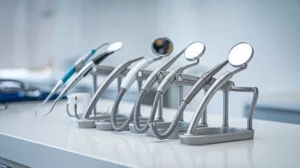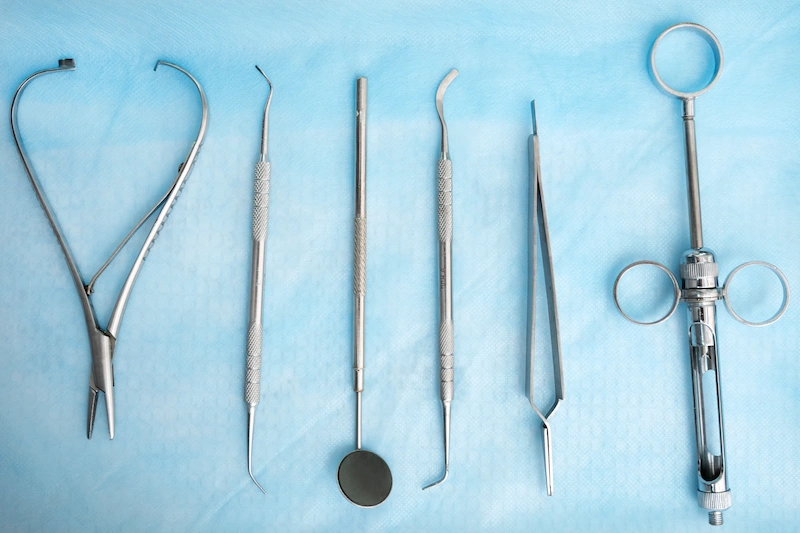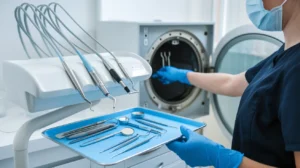
How to Choose the Best Dental Mouth Mirror for Oral Care
Picking the right dental mouth mirror might seem like a small task, but it’s actually pretty important for keeping your teeth and gums healthy. With so many options out there,

Extraction forceps rank among the most valuable tools we use as dental professionals. These instruments are significant to our practice, and their working principles are straightforward.
Dental forceps come in two main design patterns: American and English. The English pattern has a visible screw at the hinge that brings the fulcrum closer to the working end. This design gives more power than the American pattern with its horizontal hinge.
Every extraction forceps has three key components:
The sort of thing I love about these instruments is their precision engineering. Each pair of extraction forceps serves a specific tooth or set of teeth. This specificity exists because precise, controlled extractions need it.
Dental forceps’ real value comes from knowing how to complete procedures with minimal force while keeping patients safe. These tools provide an excellent grip for tooth crowns of all sizes and shapes. This helps us remove teeth that are cracked, damaged, chipped, or decayed.
New practitioners might be surprised to learn that extraction forceps do not pull teeth straight out of their sockets. We use them to deliver previously luxated teeth and expand the alveolar bone under controlled forces when needed. This knowledge forms the basis of proper forceps usage that leads to successful extractions.
My dental practice experience shows that even seasoned dentists can make common mistakes with extraction forceps. Let me share some key errors we should avoid ensuring successful extractions.
Dentists often select improper forceps. Using forceps with beaks that don’t adapt well to the tooth’s anatomy creates complications. The beaks must stay parallel to the tooth’s long axis to deliver forces in the right direction.
Here are the most serious mistakes we must avoid:
Many practitioners use uncontrolled forces during extraction that can fracture teeth and damage adjacent bone. Resistance during the procedure should make you stop and assess rather than apply more force.
Socket management needs more attention than it gets. Poor inspection for remaining root fragments or improper debridement can substantially affect healing. Thorough irrigation during the procedure helps maintain visibility and prevents post-operative infections.
Your positioning plays a vital role in the procedure. Bad ergonomics leads to fatigue and reduces precision. The patient’s position and your posture affect both comfort and success.
Quality extractions need time. Rushing through procedures or skipping steps like proper flap design risks complications like delayed wound healing and tissue damage.

Safety is the life-blood of our dental practice. Experience has taught me that proper sterilization and handling protocols cannot be compromised. Let me share the safety measures we must follow with dental forceps.
Proper sterilization comes first. Between patients, all forceps need autoclaving or chemical sterilization. Our instruments stay free of biological debris to avoid corrosion and maintain their integrity.
These safety protocols guide our practice:
Proper PPE plays a vital role in personal protection. Our team wears gloves, masks, and protective eyewear during procedures. PPE changes between patients, and hand hygiene follows after removing protective equipment.
A secure grip on forceps prevents slippage and potential trauma. Extra care is needed, especially when you have critical structures like nerves and blood vessels nearby. Adequate lighting and proper patient positioning ensure optimal safety during procedures.
Standard precautions apply whatever the patient’s known or suspected infection status. This includes hand hygiene before procedures and careful handling of contaminated instruments. These protocols create a safe environment for our patients and dental team consistently.
Let’s explore the practical aspects of dental forceps usage based on my clinical experience. A systematic approach is the foundation of successful extractions.
These steps will give you a full picture of proper forceps use:
I optimize these vital elements during the procedure:
The extraction process demands precise control and patience. I focus on smooth, considered movements while maintaining a secure grip. This technique minimizes trauma to surrounding tissues and enhances patient comfort throughout the procedure.
Note that examining the extracted tooth’s apices and gentle socket compression after removal are vital. This final step optimizes proper healing and confirms no root fragments remain.

My years of clinical experience have taught me valuable lessons about improving your forceps technique. Success comes from understanding these instruments’ biomechanical advantages.
The biomechanical advantage of dental forceps is a vital part of quick extractions. Your patients will feel less discomfort, and you’ll get better results when you position them correctly to transfer stress without squeezing, grabbing, or twisting the tooth.
Here’s what I recommend optimizing efficiency:
Physics forceps system has been a breakthrough in my practice. These instruments work on first-class lever mechanics that let you extract teeth without trauma or excessive force. Their design protects the buccal bone plate, which matters most in implant cases.
Modern Technique Improvement: The combination of biomechanical advantages and proper instrument management will give a substantial boost to efficiency. Physics forceps need just wrist movement to apply steady pressure – less strength, but more patience does the trick. This method has reduced buccal bone fractures in my practice.
A good instrument management or cassette system will streamline your procedures. Your tools stay organized and ready to use. My experience shows that organization cuts down on interruptions and helps you use chair time better.
Becoming skilled at using dental forceps properly takes continuous learning and practice. My career has shown me how this fundamental skill grows better with experience and new technology.
Dental extractions need more than just technical skills. Practitioners must develop a natural feel for biomechanics and always focus on patient comfort and safety.
These key elements lead to excellence in forceps usage:
The best practitioners stand out through their dedication to perpetual improvement. Each procedure gives you a chance to improve your technique, whether it’s a simple extraction or a complex case.
My experience shows that keeping detailed procedure logs and reviewing challenging cases helps identify ways to improve. This self-reflection, combined with proper forceps handling techniques, builds a strong foundation for clinical excellence.
Note that dental surgery tools change with advancing technology. Learning about new forceps designs and extraction techniques can substantially boost our practice outcomes. Success comes from balancing traditional methods with modern approaches, while staying true to the basics.
There are two primary design patterns for dental forceps: American and English. The English pattern has a visible screw at the hinge, providing greater leverage, while the American pattern features a horizontal hinge. Different forceps are designed for specific teeth or sets of teeth.
Proper use involves selecting the appropriate forceps, positioning them parallel to the tooth’s long axis, applying controlled pressure, and using gentle rocking motions to widen the socket. It’s crucial to maintain alveolar support and avoid excessive force.
Common mistakes include improper forceps selection, applying excessive force, poor flap management, and attempting extraction with limited exposure. It’s important to avoid rushing through procedures and to re-evaluate when encountering resistance.
Dental forceps should undergo thorough sterilization between patients, either through autoclaving or chemical sterilization. Regular inspection for proper alignment and functionality is essential, and instruments showing signs of wear or damage should be replaced immediately.
Advanced techniques include utilizing the biomechanical advantage of forceps, implementing an instrument management system, and considering the use of physics forceps for challenging cases. The physics forceps system, which operates using first-class lever mechanics, can allow for atraumatic extractions without excessive force.

Picking the right dental mouth mirror might seem like a small task, but it’s actually pretty important for keeping your teeth and gums healthy. With so many options out there,

Dental mirrors have come a long way. From simple reflective tools to sophisticated gadgets, they play a key role in modern dentistry. With constant innovation in dental mirrors, these aren’t

Hey there, dental pros! Today, we’re diving into something super important but often overlooked—how to properly mouth mirror sterilization. If you’re in the dental field, you know these little tools
At The Surgical Kit, we are committed to providing healthcare professionals with the finest tools to ensure precision and safety in every procedure.